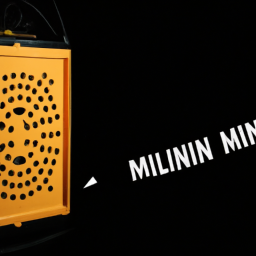How Can I Keep My Cryptocurrency Mining Rig Cool?
In this article, we will explore some effective strategies to help you keep your cryptocurrency mining rig cool. We’ll discuss the importance of cooling your rig, the potential risks of overheating, and the different cooling methods you can consider. Whether you are a beginner or an experienced miner, you will learn valuable insights on how to maintain optimal temperatures and prolong the lifespan of your mining rig. So, let’s get started and ensure your rig stays cool for maximum performance!
Introduction
Cryptocurrency mining has become a popular way for individuals to earn digital currencies like Bitcoin and Ethereum. However, mining rigs generate a significant amount of heat, which can have a negative impact on their performance and lifespan. In order to ensure optimal mining rig performance and prevent overheating, it is crucial to implement effective cooling solutions. This article aims to provide you with a comprehensive guide on how to keep your cryptocurrency mining rig cool.
Understanding the Importance of Cooling
Explaining the concept of cryptocurrency mining
Cryptocurrency mining involves solving complex mathematical problems to validate transactions on the blockchain network. This process requires a significant amount of computational power, which generates a considerable amount of heat. Without adequate cooling, this heat can accumulate and cause various issues, including reduced mining efficiency and hardware damage.
The role of cooling in mining rig performance
Cooling plays a crucial role in maintaining the performance and longevity of your mining rig. Efficient cooling allows for optimal airflow, which prevents components from overheating. Overheating can lead to reduced mining efficiency, increased energy consumption, and even hardware failures. By keeping your mining rig cool, you can maximize its performance and extend its lifespan.
Potential risks of inadequate cooling
Inadequate cooling can have several consequences for your mining rig. Firstly, it can lead to a decrease in mining performance. When components overheat, they may automatically throttle their performance to prevent damage, resulting in slower mining speeds. Secondly, excessive heat can accelerate the wear and tear of your hardware, leading to frequent breakdowns and the need for expensive repairs or replacements. Lastly, overheating can also pose a fire hazard and be a safety risk to both your mining rig and your property.
Choosing the Right Location
Considerations for selecting a suitable location
When setting up your cryptocurrency mining rig, choosing the right location is essential for effective cooling. Ideally, you should aim for a well-ventilated area with good air circulation. Consider placing your mining rig in a room with sufficient space and airflow to dissipate the heat generated during the mining process. Additionally, it is advisable to avoid placing your rig in areas prone to high temperatures, such as near windows or in direct sunlight.
Impact of ambient temperature and humidity
Ambient temperature and humidity levels can greatly influence the cooling efficiency of your mining rig. High ambient temperatures can make it more challenging to keep your rig cool, as the heat transfer process becomes less effective. Similarly, high humidity levels can increase the risk of condensation, which can damage your hardware. Therefore, it is crucial to monitor and control both temperature and humidity levels in the room where your mining rig is located.
Proximity to power sources and ventilation
When selecting a location for your mining rig, consider the proximity to power sources and ventilation options. Ensuring a stable power supply is crucial for uninterrupted mining operations. Additionally, having access to proper ventilation, such as windows or exhaust fans, can significantly assist in maintaining the overall temperature of the mining environment.
Optimizing Airflow and Ventilation
Setting up proper ventilation systems
Creating a proper ventilation system is crucial for maintaining a cool environment for your mining rig. Ensuring a continuous flow of fresh air can help prevent the buildup of heat. Consider installing exhaust fans or using windows as an outlet for hot air to escape. It is also advisable to position your mining rig in a way that allows for efficient airflow and avoids blockages.
Using exhaust fans and air filters
Installing exhaust fans in the room where your mining rig is located can help in expelling hot air and maintaining a cooler environment. This can be especially beneficial during periods of high mining activity when the rig generates more heat. Additionally, using air filters can help in keeping the air clean, preventing dust and debris from clogging the components and impeding their performance.
Arranging mining rigs for efficient airflow
Properly arranging your mining rigs within the designated space is crucial for optimizing airflow. Avoid crowding the rigs, which can lead to restricted airflow and increased heat buildup. Instead, ensure that there is sufficient space between each rig, allowing for proper ventilation. Additionally, consider the positioning of the intake and exhaust fans to ensure that hot air is expelled effectively.
Maintaining Temperature and Humidity Levels
Monitoring and controlling temperature
Regular monitoring of the temperature inside the room where your mining rig is located is essential. Use a thermometer or temperature monitoring software to keep track of the temperature levels. It is recommended to maintain the temperature below 80 degrees Fahrenheit (27 degrees Celsius) to prevent overheating. Consider implementing temperature alarms or automatic shutdowns when the temperature exceeds a certain threshold to protect your mining rig from damage.
Implementing cooling methods like air conditioning
In regions with high ambient temperatures, it may be necessary to implement additional cooling methods such as air conditioning. Air conditioning can help regulate the temperature within the room and provide a cooler environment for your mining rig. However, it is important to consider the energy consumption and associated costs when using air conditioning.
Utilizing dehumidifiers to manage humidity
High humidity levels can increase the risk of condensation, which can be damaging to your mining rig. To manage humidity, consider using dehumidifiers in the room. Dehumidifiers help remove excess moisture from the air, preventing condensation and potential damage to your hardware. Regularly monitor and maintain the desired humidity level to ensure optimal operating conditions for your mining rig.
Proper Cable Management
Organizing cables for improved airflow
Proper cable management is essential for maintaining proper airflow within your mining rig. Disorganized cables can obstruct airflow and lead to heat buildup. Take the time to neatly arrange and secure the cables to prevent any interference with the fans or other components. Consider using cable ties or cable management accessories to keep the cables organized and reduce the risk of obstruction.
Preventing cable interference and heat buildup
Cable interference can hinder the airflow and create pockets of trapped heat within your mining rig. Avoid routing cables in a way that blocks the natural airflow path. Ensure that cables are kept away from heat sources, such as heat sinks or exhaust fans, to prevent heat transfer from the cables to the components. Proper cable management plays a crucial role in preventing heat buildup and maintaining optimal cooling.
Using cable management accessories
Utilizing cable management accessories can greatly assist in maintaining a clean and organized setup. Cable ties, clips, and cable management racks can help secure and route cables in an organized manner. These accessories not only improve airflow but also make it easier to troubleshoot and upgrade components when necessary.
Choosing Suitable Cooling Solutions
Comparing different cooling options
There are several cooling solutions available for cryptocurrency mining rigs. Air cooling and liquid cooling are the two main options to consider. Air cooling relies on fans or heat sinks to dissipate heat, while liquid cooling uses a liquid coolant to absorb and carry away the heat. Each cooling solution has its own advantages and drawbacks, so it is important to carefully evaluate your specific needs and budget before making a choice.
Air cooling vs. liquid cooling systems
Air cooling is the most common and cost-effective cooling solution for mining rigs. It typically involves the use of fans and heat sinks to keep the components cool. Air cooling is relatively simple to set up and requires minimal maintenance. On the other hand, liquid cooling systems are more complex and expensive but offer better heat dissipation and are generally quieter. Liquid cooling can be particularly beneficial for high-performance mining rigs with overclocked components.
Benefits and drawbacks of each solution
Air cooling is generally more affordable and simpler to set up, making it an excellent choice for beginners or those on a budget. It provides adequate cooling for most mining rigs and requires minimal maintenance. However, air cooling may struggle to keep up with the heat generated by high-performance mining rigs. Liquid cooling, on the other hand, offers superior heat dissipation and can handle higher heat loads. However, liquid cooling systems can be more expensive, require regular maintenance, and may be more complex to set up.
Regular Maintenance and Cleaning
Ensuring proper cleaning of components
Regular maintenance and cleaning are essential for the efficient and reliable operation of your mining rig. Dust and debris can accumulate on the components, obstructing airflow and causing heat buildup. Regularly inspect and clean your mining rig, ensuring that all components are free from dust and debris. Use compressed air or a soft brush to gently remove any dirt or dust. Be cautious when cleaning sensitive components to avoid causing damage.
Inspecting fans and heat sinks
Fans and heat sinks play a crucial role in cooling your mining rig. Periodically inspect these components for any signs of damage, such as broken blades or excessive noise. Clean the fans and heat sinks to remove any dust or debris that may have accumulated. Properly functioning fans and heat sinks ensure efficient heat dissipation and prevent overheating.
Replacing thermal paste periodically
Thermal paste is a vital component in the cooling process as it helps transfer heat from the components to the heat sinks. Over time, thermal paste can dry out or become less effective. It is recommended to replace the thermal paste periodically to maintain optimal heat transfer. Follow the manufacturer’s instructions when applying new thermal paste, ensuring an even and thin layer is applied.
Monitoring and Overheating Prevention
Installing temperature monitoring software
To effectively manage the temperature of your mining rig, install temperature monitoring software. These programs allow you to monitor the temperature of various components in real-time. By keeping a close eye on the temperatures, you can promptly identify any signs of overheating and take necessary actions to prevent damage.
Setting up alerts and automatic shutdowns
Temperature monitoring software often includes features that allow you to set up alerts and automatic shutdowns. Set up temperature thresholds to trigger alarms or automatic shutdowns when the temperature exceeds safe limits. These measures can help safeguard your mining rig from overheating and potential damage.
Taking preventive measures against overheating
Preventing overheating is key to maintaining the performance and longevity of your mining rig. In addition to the cooling solutions and maintenance practices mentioned above, there are several preventive measures you can take. These include avoiding overclocking your components excessively, ensuring proper ventilation, and regularly monitoring the temperature and condition of your mining rig. By implementing these measures, you can minimize the risk of overheating and maximize the efficiency of your mining operations.
Conclusion
Keeping your cryptocurrency mining rig cool is crucial for maintaining optimal performance and preventing hardware damage. By understanding the importance of cooling, choosing the right location, optimizing airflow and ventilation, maintaining temperature and humidity levels, practicing proper cable management, selecting suitable cooling solutions, performing regular maintenance and cleaning, and monitoring and preventing overheating, you can ensure the longevity and efficiency of your mining rig. With careful planning and implementation of effective cooling strategies, you can maximize your mining profits and minimize the risks associated with overheating.






